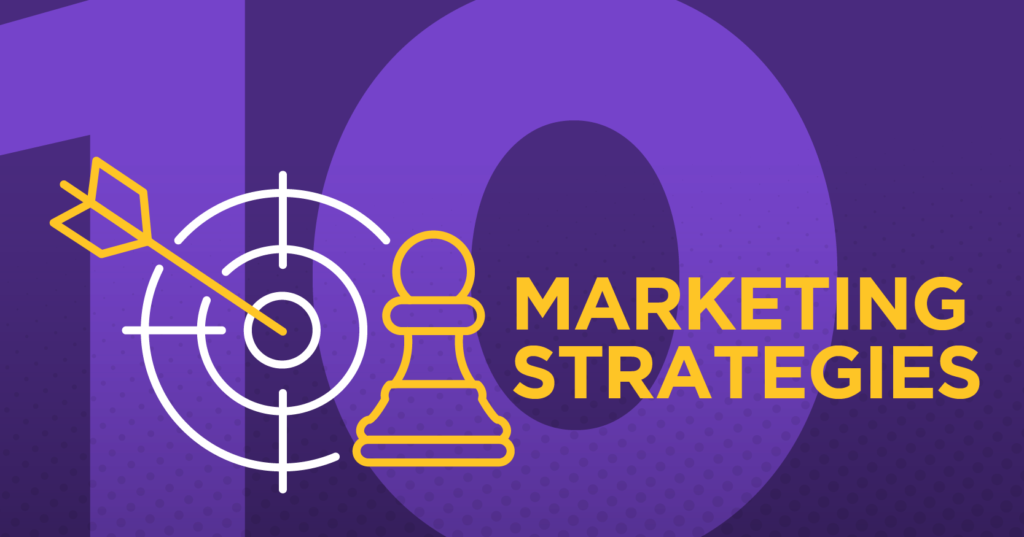10 Healthcare Marketing Strategies for Medical Practices

This article was originally published on June 22, 2022.
Running a successful medical practice takes a lot of work, so it’s no surprise if developing a healthcare marketing plan falls to the bottom of your to-do list. Digital marketing strategies can help you reach your target audience more effectively. Here are ten healthcare marketing strategies you can use right now to help get the word out about your practice online.
1. Redesign Your Website
Did you know that 38% of patients check out the doctor’s office website before their appointment?1 Therefore, a device-responsive, professionally designed website can help you form a good impression before patients even walk through your doors. It’s an opportunity to showcase your medical expertise and technological know-how, while providing answers and convenience for patients. If you don’t have time to hire an outside designer, ModMedⓇ AMP provides professionally designed, SSL certificate-enabled websites for medical practices, which include connections to the ModMed patient portal and ModMed Pay, as well as a built-in patient education library.

2.Get Social
Help keep your practice top-of-mind by appearing where patients are spending their time out of the office — on their social media feeds. Social media networks offer new opportunities for different types of digital interaction. You can create a business account and make your own posts2, or you can pay for ads on the network. AMP Digital Marketing services include ad design, placement and tracking to help you get noticed on Facebook and Instagram.
3.Blog Your Knowledge
Showcase your practice with blog posts tailored to your specialty. Demonstrating authority is part of what Google’s algorithm looks for when deciding which websites to show to searchers.3 Blog posts on common medical conditions or treatments can help search engines, and prospective patients, consider your website as a valuable educational resource. AMP Digital Marketing provides a blog-writing service for your practice.
4.Get PPC Ads
Pay-per-click (PPC) advertising can get your practice in front of potential patients. You can design an ad, set a budget, choose your audience, and then compete to appear next to search results.4 If your practice appears in front of a person that’s already interested in your medical services, you may obtain more traffic to your website. AMP Digital Marketing services can help you navigate PPC advertising.
5.Encourage Patient Reviews
Positive patient reviews can help show others that you might be a good choice to be their next healthcare provider. When current patients have a positive experience and share it online, it can help others decide to book appointments with you.5 Take a look at your online reviews. Did you get any negative feedback? How did you respond? AMP Reputation Management services can help you track and keep up with certain reviews and responses, and showcase reviews on your website.
6.Create Your Brand
What is the visual experience of your website saying to visitors? 69% of patients believe it is important for a doctor’s office to have a modern looking website.1 Your website can be used to help visually convey professionalism, approachability and medical expertise, which can affect a visitor’s decision to choose you as a provider. AMP Websites are professionally designed for medical practices to help you highlight your practice’s brand of medicine.
7.Deliver on User Experience
A positive user experience is key for your website. According to a study conducted by Accenture Health, 50% of healthcare consumers agree that a bad digital experience with a healthcare provider ruins the entire experience with that provider.6 Your website is your digital first impression, so if it’s a poor experience, potential patients may choose to go elsewhere. Some factors that you might want to check on include making your site navigation as clear and easy as possible, whether your website can resize to fit different devices, and that your forms are user-friendly. If you aren’t sure where to start, AMP Websites are built and maintained by staff knowledgeable in user experience.

8.Optimize for Search
Maybe your practice already has a beautiful website with a great user experience. But if no one can find it, your efforts are going to waste. There are some technical components to getting your website search engine ready known as SEO (search engine optimization).7 Incorporating keywords into your website and including structured data help search engines understand who you are and what you offer. AMP Websites are maintained by digital marketing professionals who keep up to date on SEO.
9.Track Your Progress
Keeping track of your marketing efforts and their performance can help give you insight into when you may need to adjust your strategy. For example, you may choose one marketing method because it is easy, but if it’s not producing the return you are hoping for, you may want to consider switching things up. With the AMP Portal, you have access to analytics that can show website, digital marketing and reputation management performance.
10.Update Your Basic Info
It sounds simple, but many practices overlook the fact that they need to keep basic information, such as hours of operation, up-to-date across a variety of channels. Google My Business, WebMD, and Vitals are just a few of the places that people search when looking for a new physician. If your address is out of date on your profiles, patients could show up to the wrong location. AMP Reputation Management includes a tool that allows you to keep your basic information updated across participating healthcare directories so you only need to make edits in one spot.
ModMed AMP can help you develop a digital healthcare marketing strategy with a team of marketing specialists supporting you every step of the way.
This blog is intended for informational purposes only and does not constitute legal or medical advice. Please consult with your legal counsel and other qualified advisors to ensure compliance with applicable laws, regulations, and standards.
2 Steve Alder, “HIPAA Social Media Rules,” HIPAA Journal (2022 January 12) online: https://www.hipaajournal.com/hipaa-social-media/
3 “How Search algorithms work,” Google Search (2022 May 17) online: https://www.google.com/search/howsearchworks/algorithms/
4 James Brockbank, “What Is PPC (Pay Per Click)? An Introduction to PPC Marketing,” Semrush Blog (2020 July 27) online: https://www.semrush.com/blog/what-is-ppc/#header3
5 Chase Williams, “Why Reviews Are Essential And How To Generate Positive Reviews For Your Business,” Forbes (2019 August 21) online: https://www.forbes.com/sites/theyec/2019/08/21/why-reviews-are-essential-and-how-to-generate-positive-reviews-for-your-business/?sh=63a254002f9b
6 Brian Kalis and Kaveh Safavi, “How can leaders make recent digital health gains last?,” Accenture (2020 August) online: https://www.accenture.com/us-en/insights/health/leaders-make-recent-digital-health-gains-last
7 Kelly Lyons, “What Is SEO? The 2022 Guide to Search Engine Optimization,” Semrush Blog (2022 February 9) online: https://www.semrush.com/blog/what-is-seo/